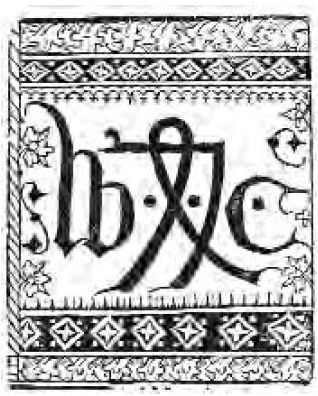- Caxton, William
- (c. 1421–1491)Commencing operations after EDWARD IV had seemingly ended the WARS OF THE ROSES, cloth merchant William Caxton introduced printing to England in 1477. With the patronage of courtiers and members of the royal houses of YORK and TUDOR, Caxton produced English works of history, philosophy, religion, and romance.Born in Kent, Caxton was apprenticed to a LONDON mercer (i.e., cloth merchant) in 1438. When his apprenticeship ended in 1446, he was already engaged in trade at Bruges in BURGUNDY. In 1462, the membership of the Merchant Adventurers, an association of English merchants, appointed Caxton their governor at Bruges, thereby giving him oversight of the group’s continental operations. Because he ceased to function as governor in 1470, Caxton may have been dismissed from office by the READEPTION government of HENRY VI, which probably objected to Caxton’s close association with Edward IV’s sister, MARGARET OF YORK, duchess of Burgundy. Because the king later employed him as a commercial diplomat, Caxton may have met Edward IV when he was in exile in Burgundy over the winter of 1470. In 1471, having completed an English translation of a French History of Troy, Caxton traveled to Cologne to learn about the new printing technology. Published in Bruges in 1474, Caxton’s History of Troy was the first book ever printed in English. Returning home in 1476, Caxton established the first printing press in England near the center of royal government in Westminster. His first printed works in England—The Dictes and Sayings of the Philosophers (1477) and the Moral Proverbs of Christine de Pisan (1478)—were translations from the French by Caxton’s chief patron, Anthony WOODVILLE, Earl Rivers, the king’s brother-in-law. Although Edward IV directly commissioned none of Caxton’s works, the printer sought and probably obtained the patronage of members of the house of York. Two books printed in 1481—Tully of Old Age and Godefroy of Bologne—were dedicated to Edward IV, while the Life of Jason (1477) and The Order of Chivalry (1484) were dedicated, respectively, to Prince Edward (see Edward V, King of England) and to RICHARD III. Because Edward IV, who had an extensive library, may have preferred colorful hand-illuminated manuscripts to plainer print publications, he was probably never more than a passive patron of Caxton’s press.However, both Margaret BEAUFORT, countess of Richmond, and Henry BOURCHIER, earl of Essex, actively favored Caxton, while HENRY VII commanded Caxton to print his English translation of Christine de Pisan’s Feats of Arms and Chivalry in 1489. Caxton printed some eighty different titles, including twenty-one of his own translations and the first editions of Geoffrey Chaucer’s Canterbury Tales and Sir Thomas MALORY’s Le Morte d’Arthur. Caxton’s concentration on chivalric romances, histories, and religious works reflected the tastes of his aristocratic patrons and of the wealthy London merchants who purchased his books in growing numbers. By the 1480s, the government, thanks in part to Caxton, was becoming increasingly aware of the PROPAGANDA potential of the printing press. After 1485, the Crown appointed a royal printer to publish all the king’s proclamations and began to take steps to ensure that no politically or religiously subversive works issued from English presses, although real censorship did not appear until Lutheran works entered England in the 1520s. After Caxton’s death in 1491, his press continued to operate under his apprentice,Wynkyn de Worde.Further Reading: Blake,N. F., Caxton: England’s First Publisher (New York: Barnes and Noble, 1976); Blake,N. F., William Caxton and English Literary Culture (London: Hambledon Press, 1991); Hindley, Geoffrey, England in the Age of Caxton (New York: St. Martin’s Press, 1979); Painter, George D., William Caxton: A Biography (New York: Putnam, 1977).
 A woodcut illustrating William Caxton's Fable of Aesop
A woodcut illustrating William Caxton's Fable of Aesop The trademark and initials of William Caxton
The trademark and initials of William Caxton
Encyclopedia of the Wars of the Roses. John A.Wagner. 2001.
